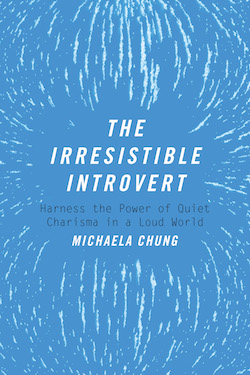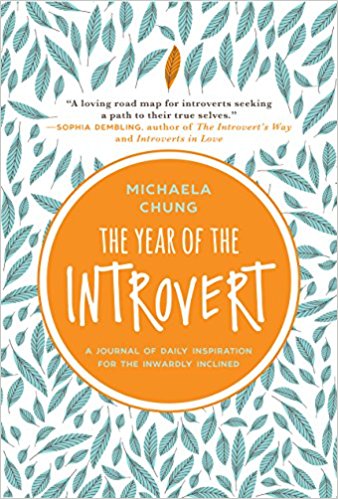
Are you an introvert who cares about social or environmental justice? Maybe you want to contribute to advance a particular cause, yet struggle to see yourself as an “activist”.
You’re not alone. Introversion and activism aren’t exactly an obvious match from our societal viewpoint.
Yet, the truth is that introverts can make excellent activists, and activism would indeed fail without the contributions of introverts like you.
Though navigating the realm of activism as an introvert can be tricky, it can also be where you thrive and even ease anxiety if you turn a few myths upside down, expand your lens of activism, and identify your innate strengths to bring to this work.
Shed These Activism Myths
Activism tends to conjure up images of loud chanting, crowded protests, political lobbying, or knocking on doors of strangers.
For introverts who dislike crowds and are prone to social exhaustion, this idea of activism might sound like a recipe for anxiety and depletion.
Although I can also say that as an introvert who has engaged in all those forms of activism, I also know that introverts can step into discomfort to take these actions. But we may be better able to sustain our activism in other forms.
So, let’s keep in mind that activism does not always equate to:
- Marching in large crowds – A lot of activism is done behind the scenes, not just in protests.
- Loud chanting – There are many quiet forms of activism and even some protests and sit-ins are done in silence.
- Charismatic, extroverted leaders – Much of the important work is done by the quiet strategizers or leading from behind rather than being the face of a movement.
- Constant “peopling” – Activism can include engaging in advocacy and dialogue, but there are many skills needed that involve no human interaction.
The stories we tell about activism speak to an unfortunately narrow view that omits the many individuals and groups with vast skill sets that are absolutely critical for positive social change.
How to Find Your Place as an Introvert Activist
As I’m hosting introvert activist Omkari Williams for an upcoming workshop on Sustainable Activism for Introverts and HSPs, the following steps draw from her map for finding your place in activism and also weave in my own.
1. Broaden your definition.
To see yourself in activism, look beyond what you immediately see in the world of activism. I invite you to consider the actions that activists take quietly and often out of view such as:
- Tech support, website/graphic design skills for social movements
- Writing policy proposals, letters to the editor or elected officials
- Storytelling, visual art, theater, poetry, and music that provoke new ways of thinking
- Sharing resources, weaving connections, supporting other activists to strengthen and sustain movements while ensuring community care
- Skillfully ‘calling in’ friends on social media, having difficult conversations with loved ones
Omkari says, “For me, being an activist means that you are someone who takes consistent action, whether in front of the scenes or way behind the scenes, to advance a cause that you are passionate about. The size of the action isn’t the point, what matters is that you are regularly taking action to make a difference.”
2. Clarify your vision.
If you’re like me, you may want to tend to all of the social and environmental problems of the world. While this desire is understandable, it can also lead to ineffectiveness, overwhelm, and inaction. Activism needs introverts in every movement, but that doesn’t mean we all need to have our hands in immigration, climate change, Black Lives Matter, watershed activism, women’s rights, and so forth.
Omkari recommends exploring your own personal story and motivations for the change you want to see in the world and then settling on no more than two issues to focus your actions. Keep in mind that often your efforts in one area can ripple out and benefit other causes, as is depicted in this excellent TED Talk on “Drawdown”.
3. Assess your strengths and energy.
There are skills you may need to develop for the purpose of your cause. Yet, there are also strengths and skills you already possess that you can contribute with relative ease. Likewise, sustainable activism necessitates knowing what actions and environments feed and deplete your energy. If you’re new to activism, this may require some exploration to discern and find your flow.
We all have varying roles to play. Discover yours with this Activist Archetype quiz.
4. Identify key groups and organizations.
I know many introverts who prefer to go it alone with their actions. Yet, finding key groups and organizations to join forces can help you to: 1) Learn from others and find your place in movements already in existence, and 2) Connect with others to maintain momentum and provide support when things get tough.
Coordinated coalitions are vital to social movements. One advantage of the tech age is that much of your involvement in these groups can be online, if you’re one who prefers the virtual sphere.
5. Create your plan.
Write a plan aligned with your purpose, strengths, and energy and that holds you accountable to taking consistent action. Start with small goals and actions for yourself that are attainable and then build from there. You might commit to one action each week, but the point is to begin contributing what you have to offer. Keep in mind that you can adapt and change directions as you explore and discover your way.
Of course, throughout your journey as an introvert activist, taking time to rest and recharge is vital to the sustainability of your efforts and the movements as a whole.
Activism needs introverts like you to recognize and mobilize your unique strengths in the world without sacrificing your own well-being or landing in depletion.
If you’d like to meet other introverts doing this work and get support in finding your way and creating your plan, Omkari and I invite you to join us on February 27, 2021 in a special workshop she’ll be giving designed with you in mind: Sustainable Activism for Introverts and HSPs










